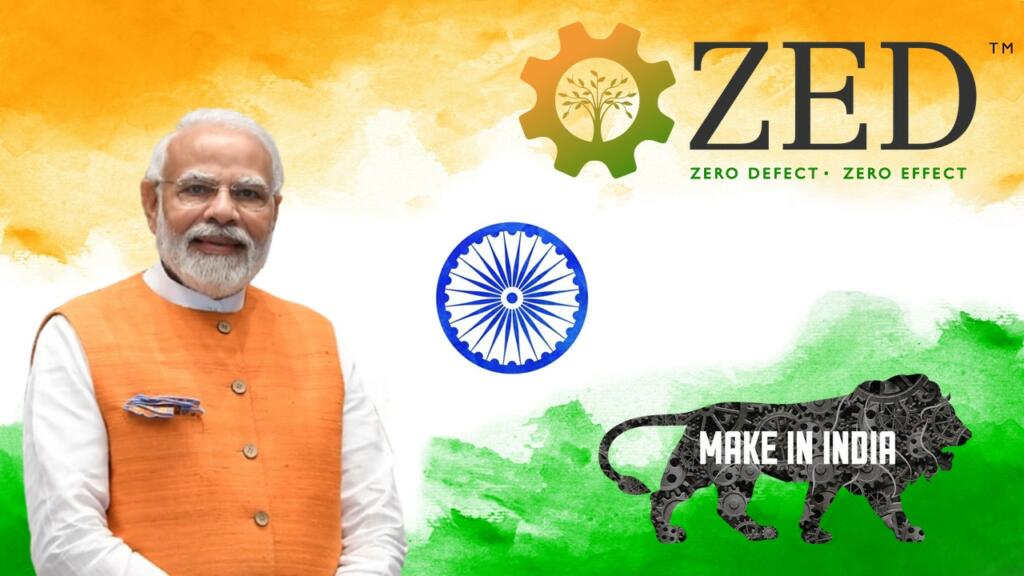Over the past eight years, the Make in India initiative has transformed India into a manufacturing powerhouse, setting high standards for quality on the global stage. Under the visionary leadership of Prime Minister Shri Narendra Modi, ‘Make in India’ has become a catalyst for innovation, skill development, and world-class manufacturing infrastructure. Today, as it completes eight years, the program stands tall, showcasing significant accomplishments across 27 sectors.
Now, let’s dive into the data that showcases the success of the initiative on the global front. While China retains the title of ‘Factory of the World’, India is catching up. According to a recent study by the Boston Consulting Group, while US imports from China decreased by 10 percent from 2018 to 2022, imports from India increased by a staggering 44 percent.
US imports of mechanical machinery from China dropped by 28 percent during the same period. It’s not just a shift; it’s a seismic surge in India’s role on the global economic stage.
Africa is another market which India is slowly capturing. With strategic initiatives such as “Focus Africa,” the India-Africa Forum Summit, and the Asia-Africa Growth Corridor, trade has flourished, reaching $62.6 billion in 2017-18, making India Africa’s third-largest trading partner.
Recognizing the digital divide, India has launched initiatives like the Pan Africa e-Network project, providing tele-education and medical education. Indian pharmaceuticals already contribute nearly 20% to Africa’s healthcare needs, and initiatives like the India-Africa Health Sciences Meet strengthen these ties. In the automotive sector, Indian bikes are already dominating the scene.
Read More: Bajaj and TVS went to Africa and drove 160 Chinese motorbike companies out
India’s Duty-Free Tariff Preference scheme, particularly benefiting Least Developed Countries, has played a pivotal role in enhancing trade. Approximately 38 African nations enjoy duty-free access to 98.2% of India’s total tariff lines, contributing to the steady increase in trade figures.
With the ‘Make in India’ initiative gaining momentum and India ranking among the top 5 manufacturing destinations globally, there’s an opportunity to reshape the narrative.
Auto giants like Suzuki, Nissan, and Toyota are already exporting high-quality, ‘Made in India’ products to Africa. As the US-China trade war casts uncertainties, India’s central location between Africa and Asia becomes a strategic advantage.
What’s driving this surge? The answer lies in the ‘Made in India’ stamp of quality. India’s commitment to producing top-notch products that meet the highest global standards is earning recognition worldwide.
Prime Minister Modi’s vision of ‘zero defect, zero effect’ in manufacturing is becoming a reality.
Talking about the ‘Zero Defect, Zero Effect’ philosophy championed by Prime Minister Modi. The Indian government has introduced the ZED Scheme, focusing on promoting zero-defect manufacturing among micro, small, and medium enterprises (MSMEs). With a whopping Rs. 491.00 crores investment, this initiative aims to create an ecosystem for quality production, energy-efficient manufacturing, and support the ‘Make in India’ campaign.”
Let’s take a moment to appreciate the achievements of Make in India. The Production Linked Incentive (PLI) scheme, launched in 2020-21, has given a substantial boost to domestic production in strategic growth sectors, making Indian industries more competitive.
India’s export figures are breaking records, with the toy industry experiencing a staggering 636% growth in April-August 2022 compared to the same period in 2013 thanks to strategic interventions like increased customs duties, quality control orders, and initiatives like The India Toy Fair. The ‘Make in India’ stamp is becoming synonymous with quality and innovation. The toy industry, historically import-dependent, has witnessed a phenomenal turnaround.
And it doesn’t stop there! India’s credibility is soaring, with the world’s largest democracy on track to becoming the world’s most powerful economy.
The government’s commitment to ease of doing business, reforms in labor laws, and reductions in compliance burdens are attracting investors from across the globe.
But how did India achieve this feat? The Make in India initiative is built on four pillars – new processes, new infrastructure, new sectors, and a new mindset.
By streamlining licensing rules, aligning them with global best practices, and fostering a collaborative public-private partnership model, India has dismantled obsolete frameworks and replaced them with a transparent, user-friendly system.
India’s focus on creating a conducive business ecosystem is evident in initiatives like the National Single Window System and the Prime Minister’s Gatishakti program, ensuring logistical efficiency and connectivity for businesses.
Additionally, the One-District-One-Product (ODOP) initiative is empowering artisans and manufacturers, contributing to the socio-economic growth of various regions. India is not just manufacturing; it’s creating a global identity for its indigenous products.
The initiative has not just reshaped India’s economic landscape but has also positioned the nation as a global manufacturing hub. The world is witnessing India’s meteoric rise, backed by quality, innovation, and a commitment to excellence.
